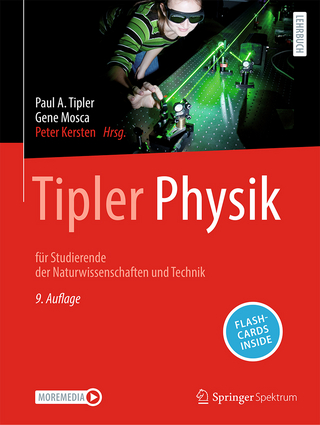
Photonic Integrated Circuits
Integration platforms, building blocks and design rules
Seiten
2018
Institution of Engineering and Technology (Verlag)
978-1-78561-074-5 (ISBN)
Institution of Engineering and Technology (Verlag)
978-1-78561-074-5 (ISBN)
- Titel wird leider nicht erscheinen
- Artikel merken
A photonic integrated circuit (PIC) can be seen as a 'light-based' analogue of an electronic circuit. Much research has gone into this area and this well-organised book sheds light on the technology behind PICs and the capabilities of the various platforms available.
A photonic integrated circuit (PIC) can be seen as a 'light-based' analogue of an electronic circuit (i.e. where functionality occurs by manipulation of light rather than electrical current). Much research has gone into this area and this well-organised book sheds light on the technology behind PICs and the capabilities of the various platforms available. It provides an engineering approach to photonic integration technologies from the fundamental concepts, through to assembly issues and the integration strategies to combine different components in a single chip.
Photonic Integrated Circuits is the only book to provide comprehensive coverage of all three main platforms: PLC/silica/doped glass, silicon-on-insulator, and indium phosphide. It focusses on the available libraries of commercially available optical components, and is based on close collaboration with the suppliers of these technologies. It also includes application examples, describing how PICs are being used in real world scenarios which provide engineers with a feel of what the technology is capable of.
Topics covered include: an introduction to photonic integration technologies and circuits; wave-guiding; passive components including optical couplers, optical filtering, and integrated mirrors; lasers and amplifiers; modulators; photodetectors; photonic integrated circuit design; the PLC/silica/doped glass platform; the silicon-on insulator platform; the indium phosphide platform; hybrid and heterogeneous integration.
This book will be essential reading for photonic circuit designers in industry and academia. Postgraduate students in electrical engineering and PhD students in the field of photonics and telecommunications will find it useful. This is also an important text for research engineers in industry who want to understand the potential of applying this technology to their field, and physicists who want to transfer their optical and photonic technologies out of the laboratory.
A photonic integrated circuit (PIC) can be seen as a 'light-based' analogue of an electronic circuit (i.e. where functionality occurs by manipulation of light rather than electrical current). Much research has gone into this area and this well-organised book sheds light on the technology behind PICs and the capabilities of the various platforms available. It provides an engineering approach to photonic integration technologies from the fundamental concepts, through to assembly issues and the integration strategies to combine different components in a single chip.
Photonic Integrated Circuits is the only book to provide comprehensive coverage of all three main platforms: PLC/silica/doped glass, silicon-on-insulator, and indium phosphide. It focusses on the available libraries of commercially available optical components, and is based on close collaboration with the suppliers of these technologies. It also includes application examples, describing how PICs are being used in real world scenarios which provide engineers with a feel of what the technology is capable of.
Topics covered include: an introduction to photonic integration technologies and circuits; wave-guiding; passive components including optical couplers, optical filtering, and integrated mirrors; lasers and amplifiers; modulators; photodetectors; photonic integrated circuit design; the PLC/silica/doped glass platform; the silicon-on insulator platform; the indium phosphide platform; hybrid and heterogeneous integration.
This book will be essential reading for photonic circuit designers in industry and academia. Postgraduate students in electrical engineering and PhD students in the field of photonics and telecommunications will find it useful. This is also an important text for research engineers in industry who want to understand the potential of applying this technology to their field, and physicists who want to transfer their optical and photonic technologies out of the laboratory.
| Reihe/Serie | Materials, Circuits and Devices |
|---|---|
| Verlagsort | Stevenage |
| Sprache | englisch |
| Maße | 156 x 234 mm |
| Themenwelt | Naturwissenschaften ► Physik / Astronomie ► Allgemeines / Lexika |
| Technik ► Elektrotechnik / Energietechnik | |
| Technik ► Nachrichtentechnik | |
| ISBN-10 | 1-78561-074-0 / 1785610740 |
| ISBN-13 | 978-1-78561-074-5 / 9781785610745 |
| Zustand | Neuware |
| Haben Sie eine Frage zum Produkt? |
Mehr entdecken
aus dem Bereich
aus dem Bereich
Band 1: Mechanik und Thermodynamik
Buch | Softcover (2022)
Wiley-VCH (Verlag)
CHF 55,85
für Studierende der Naturwissenschaften und Technik
Buch | Hardcover (2024)
Springer Spektrum (Verlag)
CHF 109,95


